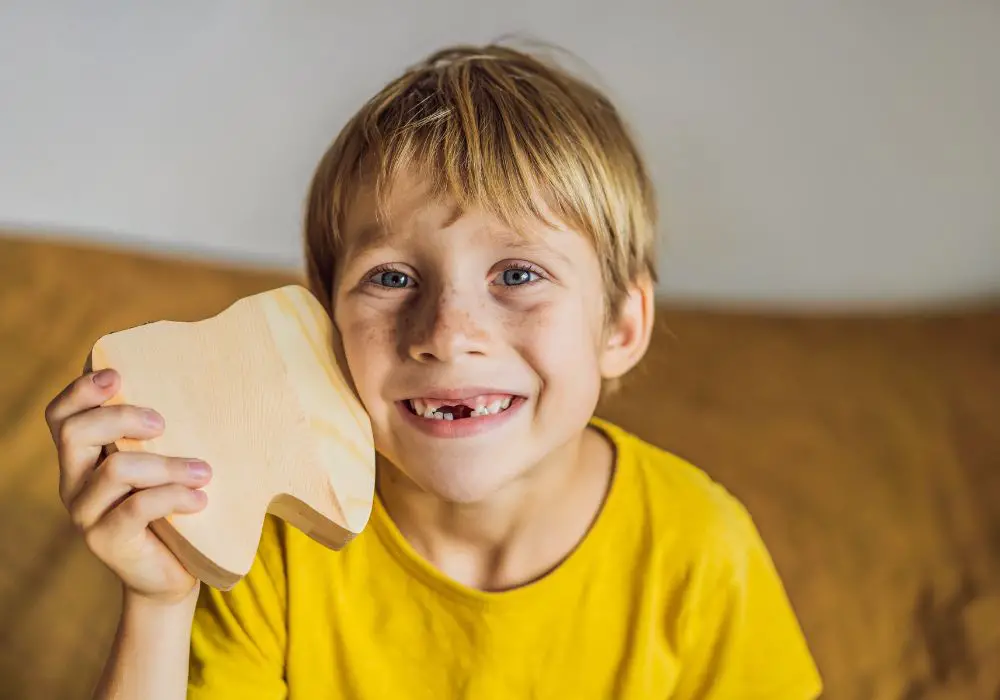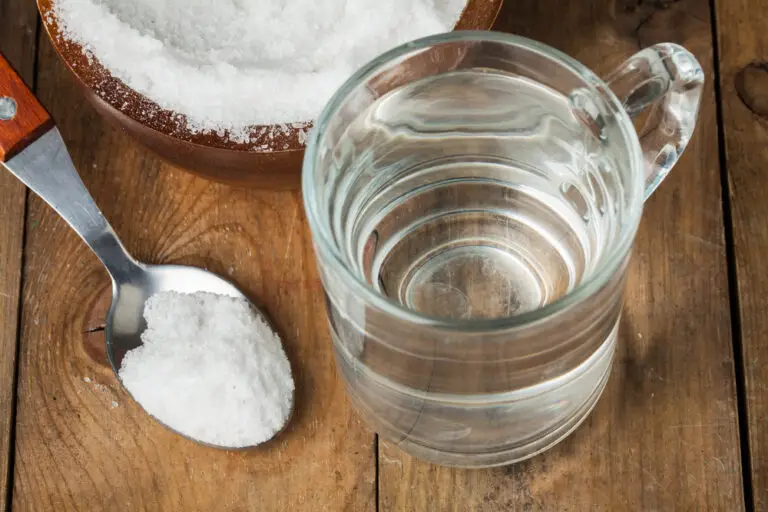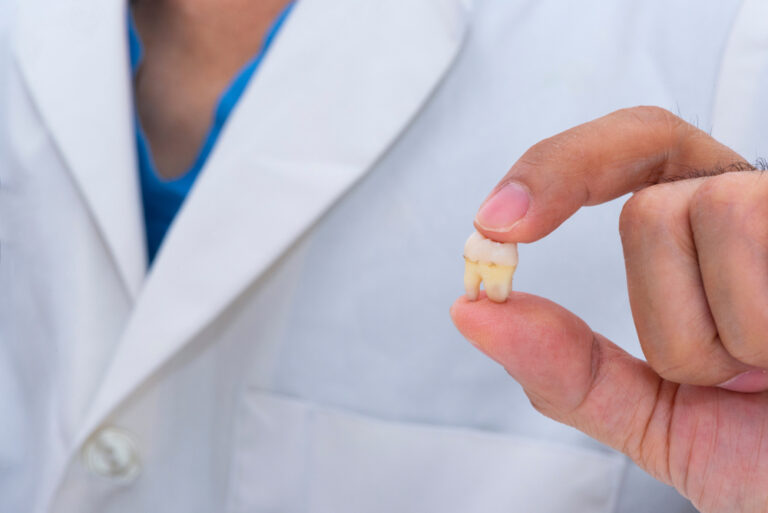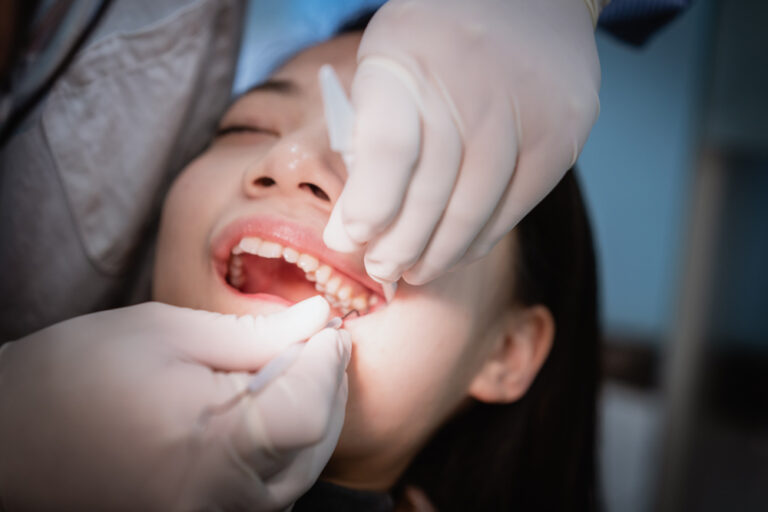Are you wondering if kids get teeth at 6 years old? The answer is yes, they do! Around the age of 6, children typically start to lose their baby teeth and grow their permanent teeth. This is an exciting milestone for both kids and parents, but it can also come with some discomfort and uncertainty.
The process of losing baby teeth and growing permanent teeth can vary from child to child. Genetics play a big role in determining when your child’s teeth will come in and fall out. However, on average, kids lose their top and bottom front teeth between the ages of 6 and 8, followed by their molars between the ages of 10 and 12. It’s important to note that every child is different, and some may experience this process earlier or later than others.
When Do Kids Start Teething?
If you’re a parent, you might be wondering when your child will start teething. Here’s what you need to know:
Infant Teething Timeline
Teething usually begins between the ages of 6 to 12 months, although for some babies, a tooth can appear as early as 4 months or later than 12 months. Most of the time, the two front teeth – the central incisors – on either the top or bottom row make their appearance first.
After that, the teeth will continue to come in, usually in pairs, until your child has a full set of 20 primary teeth. The process of teething can be uncomfortable for your child, and they may experience some pain and discomfort.
First Teeth Appearance
The average first baby tooth erupts at 6 or 7 months, but first teeth may emerge at around 12 months old (or even later). And some babies cut their first teeth very early, at around 3 or 4 months old. It’s hard to predict exactly when your baby’s teeth will arrive, but there are some signs to look out for.
Some common signs that your baby is teething include:
- Drooling
- Chewing on objects
- Irritability
- Difficulty sleeping
- Swollen or tender gums
If your child is experiencing discomfort during teething, there are some things you can do to help. You can try giving them a teething ring to chew on, or gently rubbing their gums with a clean finger. You can also talk to your pediatrician about over-the-counter pain relief options.
Overall, teething is a normal part of your child’s development, and while it can be uncomfortable, it’s nothing to worry about. With a little patience and care, you can help your child get through this milestone with ease.
The 6-Year Molars

If you have a child around 6 or 7 years old, you may have heard of the term “6-year molars.” These are the first set of permanent molars that typically erupt around this age, and they are a significant milestone in your child’s dental development. In this section, we’ll discuss what 6-year molars are and the symptoms your child may experience when they erupt.
What Are 6-Year Molars
The 6-year molars are the first permanent molars that erupt in your child’s mouth. Unlike most teeth, they do not replace any primary (baby) teeth. Instead, they come in behind the last primary molars and are located at the back of the mouth. These teeth are larger and have more grooves and pits than the primary molars, making them more susceptible to decay.
Symptoms of 6-Year Molars
When the 6-year molars erupt, your child may experience some discomfort and pain. Here are some common symptoms to look out for:
- Headaches
- Cheek biting
- Ear or jaw pain
- Low-grade fevers
- Swelling
These symptoms typically last for a few days and then subside. You can help alleviate your child’s discomfort by giving them over-the-counter pain relievers, such as acetaminophen or ibuprofen, and applying a cold compress to their cheek.
It’s important to note that not all children experience symptoms when their 6-year molars erupt. Some children may have an easier time with the process, while others may have a more difficult time. If you’re concerned about your child’s dental development, don’t hesitate to schedule an appointment with their pediatric dentist.
In summary, the 6-year molars are the first set of permanent molars that erupt in your child’s mouth. They do not replace any primary teeth and are located at the back of the mouth. When they erupt, your child may experience some discomfort and pain, but these symptoms typically subside after a few days. If you have any concerns about your child’s dental development, consult with their pediatric dentist.
Caring for Kids’ Teeth at 6

At the age of 6, your child will begin to lose their baby teeth and start growing permanent teeth. It’s important to take care of their teeth to prevent cavities and gum disease. Here are some tips for caring for your child’s teeth at 6.
Brushing and Flossing
Brushing and flossing are essential for maintaining good oral health. Teach your child to brush their teeth twice a day, in the morning and before bed, for at least two minutes each time. Use a soft-bristled toothbrush and fluoride toothpaste to clean their teeth thoroughly.
Flossing is also important to remove food particles and plaque between teeth. Show your child how to floss their teeth gently and thoroughly at least once a day. If your child has trouble flossing, consider using floss picks or interdental brushes to make it easier.
Regular Dental Check-Ups
Regular dental check-ups are crucial for your child’s oral health. Schedule a dental appointment for your child every six months to ensure their teeth are healthy and developing properly.
During the check-up, the dentist will examine your child’s teeth and gums, clean their teeth, and provide any necessary treatments, such as fluoride treatments or dental sealants.
In addition to regular check-ups, encourage your child to maintain a healthy diet and limit sugary and acidic foods and drinks. By following these tips, you can help your child maintain healthy teeth and gums for a lifetime.
Common Dental Problems at Age 6
At age 6, your child may have a mix of primary (baby) and permanent teeth. This is an important time to establish good dental habits and prevent common dental problems. Here are two common dental problems that you should be aware of:
Tooth Decay
Tooth decay, also known as cavities or caries, is the most common dental problem in children. It is caused by bacteria in the mouth that produce acids that eat away at the tooth enamel. At age 6, your child’s permanent molars are starting to come in, which can be more susceptible to decay.
To prevent tooth decay, make sure your child brushes their teeth twice a day with fluoride toothpaste and flosses daily. Limit sugary snacks and drinks, and encourage your child to drink water instead. You may also consider dental sealants, which are thin coatings applied to the chewing surfaces of the molars to protect them from decay.
Gum Diseases
Gum diseases, such as gingivitis and periodontitis, are caused by bacteria in the plaque that builds up on teeth and gums. Symptoms may include red, swollen, or bleeding gums, bad breath, and loose teeth. At age 6, your child may be more prone to gingivitis due to poor oral hygiene habits.
To prevent gum diseases, encourage your child to brush and floss daily, and schedule regular dental checkups and cleanings. You may also consider using an antimicrobial mouthwash to reduce the bacteria in the mouth.
In summary, tooth decay and gum diseases are common dental problems that can affect children at age 6. By establishing good dental habits and seeking professional dental care, you can help your child maintain a healthy smile.
Promoting Good Dental Habits

Taking care of your child’s teeth is essential for their overall health and well-being. Promoting good dental habits early on can help prevent tooth decay and other dental issues. Here are some tips to help your child maintain good dental health:
Healthy Eating
A healthy diet is crucial for your child’s dental health. Make sure your child eats a balanced diet that includes plenty of fruits, vegetables, and whole grains. These foods are rich in vitamins and minerals that help strengthen teeth and prevent tooth decay. Foods high in calcium, such as yogurt, broccoli, and milk, are also essential for strong teeth.
Avoiding Sugary Drinks
Sugary drinks, such as soda, juice, and sports drinks, can be harmful to your child’s teeth. The sugar in these drinks can lead to tooth decay and cavities. Instead, encourage your child to drink water or milk. Water helps wash away food particles and keeps the mouth hydrated, while milk is an excellent source of calcium and other essential nutrients.
To promote good dental habits, it’s also essential to teach your child the importance of brushing and flossing regularly. Make sure your child brushes their teeth twice a day with fluoride toothpaste and flosses at least once a day. Additionally, regular visits to the dentist can help catch dental issues early on and prevent more significant problems down the road.
By promoting good dental habits early on, you can help your child maintain healthy teeth and gums for years to come.
Frequently Asked Questions
What are the symptoms of 6-year-old molars coming in?
When 6-year-old molars start to come in, children may experience symptoms such as pain in the back of the mouth, swollen gums, and difficulty eating. Some children may also experience irritability and trouble sleeping.
How many 6-year molars do children typically get?
Children typically get four 6-year molars, two on the top and two on the bottom. These molars are the first permanent teeth to come in behind the baby teeth.
What are some ways to relieve pain from 6-year-old molars?
To relieve pain from 6-year-old molars, you can try giving your child over-the-counter pain medication, such as ibuprofen or acetaminophen. You can also apply a cold compress to the outside of the cheek to help reduce swelling.
Can 6-year-olds experience teething symptoms?
Yes, 6-year-olds can experience teething symptoms when their 6-year molars are coming in. These symptoms are similar to those experienced during the teething process for baby teeth.
What is the teething process like for 6-year-olds?
The teething process for 6-year-olds can be uncomfortable, but it typically only lasts a few days. Once the molars have fully erupted, the pain and discomfort should subside.
Do 5-year-olds typically get their 6-year molars?
No, 5-year-olds do not typically get their 6-year molars. These molars usually come in around the age of 6, but the timing can vary from child to child.






